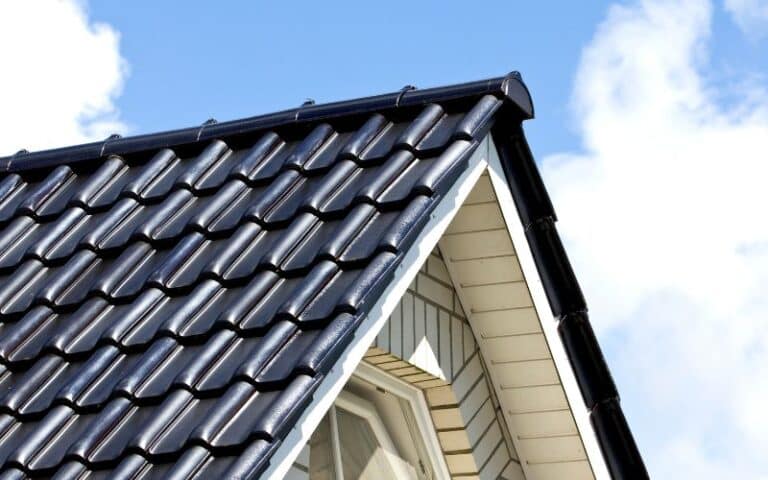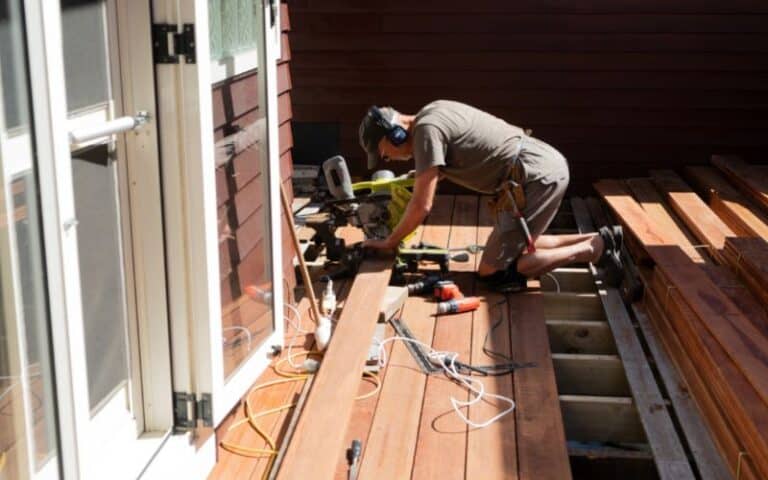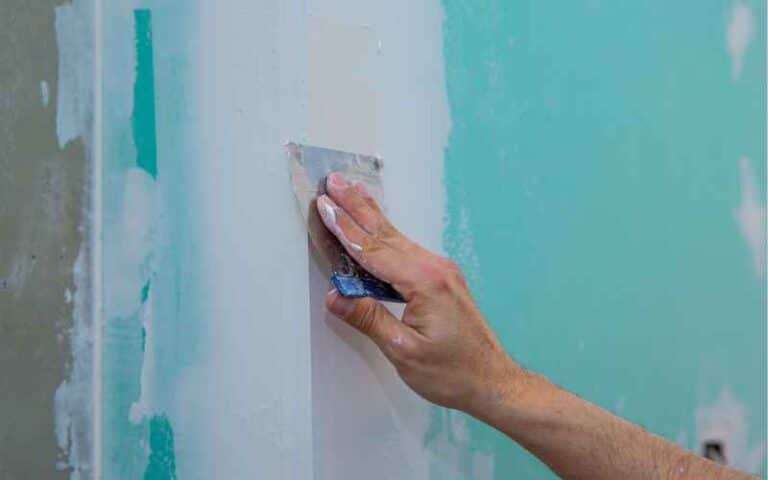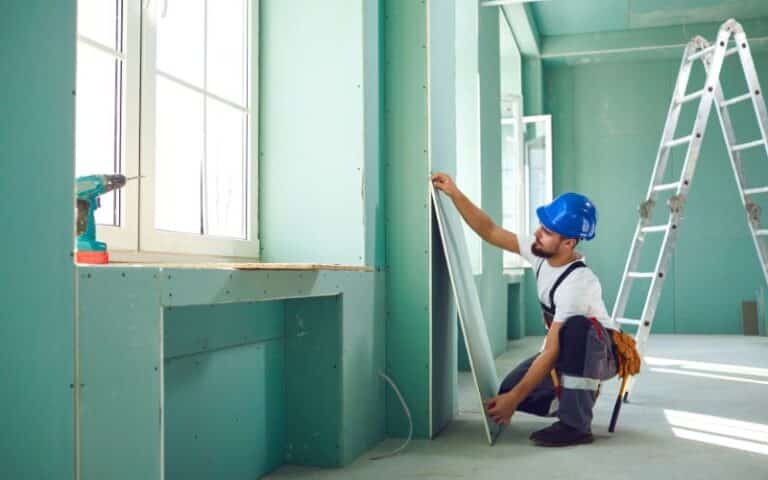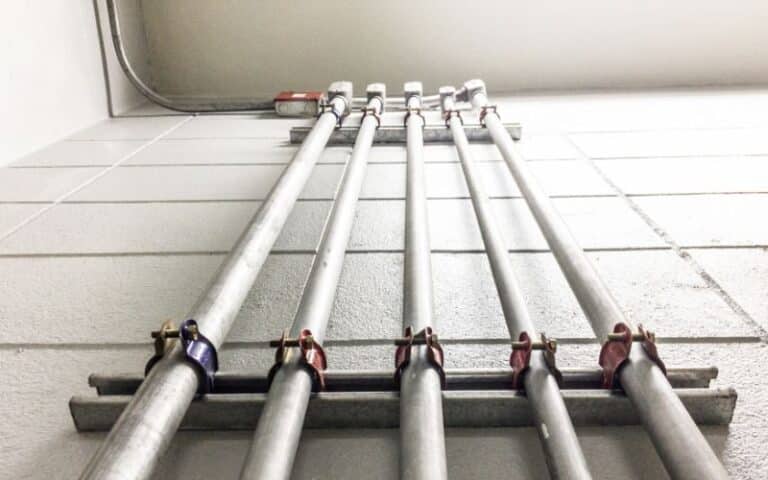The right door can make your house more secure, save money on utility bills, and create a great first impression on visitors.
A door with brick molding is a beautiful addition to traditional brick houses and more modern structures with different cladding.
Brick molding is a contemporary, basic molding standard on many pre-hung exterior door options.
Removing brick mold from a pre-hung door can be done if all measures are followed accordingly. Water damage is a common problem for wood moldings seen outside of homes. Professionals may remedy the issue by removing the affected component and replacing it with a new one.
Ready for a Roofing Quiz?
Do Prehung Doors Come with Brick Molding?

Yes, brick molds are embodiments and attachments that almost always come with pre-hung door units, which are door frames and doors ordered together as a single unit.
This is often the situation with fiberglass doors, which means that brick mold and fiberglass are compatible building materials.
Brick mold, which may also be written brickmould, is a kind of trim that borders your door and the window.
It can be built of any number of different materials. The majority of its applications are aesthetic.
It encircles the door frame and creates a physical separation between the doorframe and the outer walls of the house by acting as a barrier. This results in a more consistent and unified flow in terms of style.
Can You Remove a Brick Mold from a Prehung Door?
You can remove a brick mold from a pre-hung door if done correctly. This can be remedied by removing the affected component and replacing it with a new one.
When removing the decaying piece, be careful not to fracture the entire piece of molding if it is joined to another piece that is not damaged.
Users can use it for a variety of purposes, similar to other kinds of finishing touches. Brick mold profiles provide a versatile design used in various home settings.
Brick mold, for instance, may serve the purpose of crown molding and an apron or transitional piece beneath a windowsill.
It is an excellent option for anybody looking for a distinctive and character-filled addition to their house.
How Do I Remove a Brick Mold From a Prehung Door?
Suppose you have to remove a brick mold from a pre-hung door casing. In that case, the following steps are a well-detailed explanation of what you need to take:
- Make a clean incision through the painting and sealant with a knife blade at the point where the casing touches the door jamb, the paneling, and the miter point.
- When removing the door casing using a flat pry bar, use caution so as not to destroy the structures next to the door.
- Any heavy coating of sealant or outdated caulking on the doorframe or siding should be scraped off using a utility knife or chisel.
- Take the measurement starting at the base of the casing and ending at the long top edge of the miter intersection.
- You should cut a miter at the very top of the casing at a 45-degree angle.
- The casing should be squared off at the bottom once it has been cut to length.
- Mount the casing to the doorway in the appropriate location.
- You should fasten the wall pillar and door jamb with nails.
- Fill in and caulk the spaces between the nails and at the joints and edges.
- Apply primer and paint to the newly installed door casing.
Are Brick Molds Needed on Prehung Doors?
Yes, outdoor brick molding is required for most pre-hung door installations, even if the building has siding rather than a brick facade.
The use of brick molding provides your front entry with a clean and complete appearance while also concealing the connection point between the doorway unit and the wall structure.
Since a door serves as the point of entry and exit for an entire home, it is crucial to choose a door that is not only resilient but also reliable in terms of its locking mechanisms.
Brick mold doors provide many advantages that other types of doors cannot replicate. The installation of a brick mold door gives several advantages, including the following:
#1. Longevity
A door with brick mold is much more long-lasting than an equivalent door without brick mold.
The plaster surrounding your door is more likely to remain intact if you have brick mold installed around it.
Even though molding your door using brick mold does not guarantee it will last a lifetime. However, it is highly outstanding in protecting doors from being worn and damaged.
#2. Protections Against Severe Weather Conditions
Brick molds, especially those made of PVC, are impervious to the effects of dampness. This protects the door frame from retaining moisture, which might lead to deterioration in the future.
#3. Elegant Appearance
Many individuals prefer a brick mold on their front door instead of the more modern and sleek style typical in many commercial buildings.
This is because brick mold gives a more welcoming and comfortable appearance. Brick mold doors and windows can have a more substantial appearance.
Still, many people find the appearance aesthetically pleasing owing to the additional flourishes included with a brick mold.
Ultimately, deciding between a modern standard door and a traditional brick mold door hinges on personal taste.
#4. Additional Safety and Protection
A brick mold door is unquestionably more secure than a standard door since it has an additional frame that helps to make breaking in more strenuous.
What Differentiates a Door with a Brick Mold and One Without?
It is totally up to you to decide whether you want a brick mold or a non-brick mold installation for your house.
Both possess their attractions, and it is up to you to determine which key features would be more appropriate for your home.
The following information about the differences between brick molds and not having brick molds are provided below:
#1. Additional Layer of Safety for Doors and Windows
Since this is an independent frame affixed to the brick or paneling wall, the window itself will not deteriorate with time.
Windows that are surrounded by empty brick molds do not have this additional layer of protection.
It’s simply a regular window or door, but the installation process is much faster than when you use brick mold.
#2. Contemporary and Fashionable Appearance
Brick molds may be larger than they are due to the addition of the frame. If you have such a window, you could have a fashionable window put in a structure without brick molds.
Brick molds are more expensive to install; however, they could significantly extend your frames’ life. When it comes to no-brick mold doors, this is not the case.
#3. Lifespan
When installing new doors and windows, you must choose components that have a long lifespan. The expense of repairing broken doors and windows may quickly add up.
Although the lifetime of this option is less than that of the other choice, the installation costs are significantly lower.
Therefore, when you have it done, select the appropriate alternative so that it will continue to appear fashionable even after being exposed to severe weather conditions for many years.
#4. Pros of Brickmold on Doors
Since the molding has already been expertly cut and placed for you, no miter saw is required for the work.
The brick mold serves as a stop, preventing the unit from going too deep into the aperture, which makes the door installation process more straightforward.
To position the door in the opening while it is leveled, drive nails into the brick mold.
#5. Cons of Brickmold on Doors
If the external wall is not positionally symmetric and even, the brick mold may need to be removed to install the door properly.
#6. Pros of Doors Without Brick mold
In homes built with cement siding, the door jamb is often trimmed with a board made from the same material (1 x 4, 5/4 x 4).
It is possible to save money and time and prevent damage to the door frame and door itself if the brick mold does not need to be removed.
#7. Cons of Doors Without Brick mold
Without brick mold anchored to the frame, the door unit may slide freely in and out of the enclosed aperture, making positioning the door unit more of a challenge.
For the procedure, you’ll need a miter saw to trim the molding to length before installing it on the frame.
#8. Type of Brick Mold Materials and Their Advantages
| Brick Mold Materials | Advantages |
|---|---|
| PVC | They are moisture and pest resistant |
| Softwood | They can withstand hard weather conditions |
| Hardwood | They are more resistant to moisture damage and rot |
| Composite | They are resistant to rots and insects |
Final Thoughts
It is totally up to you to decide whether or not to set up a brick mold around your front entrance.
After weighing the benefits of this option against its drawbacks, consider your financial constraints before settling on a well-informed conclusion.

